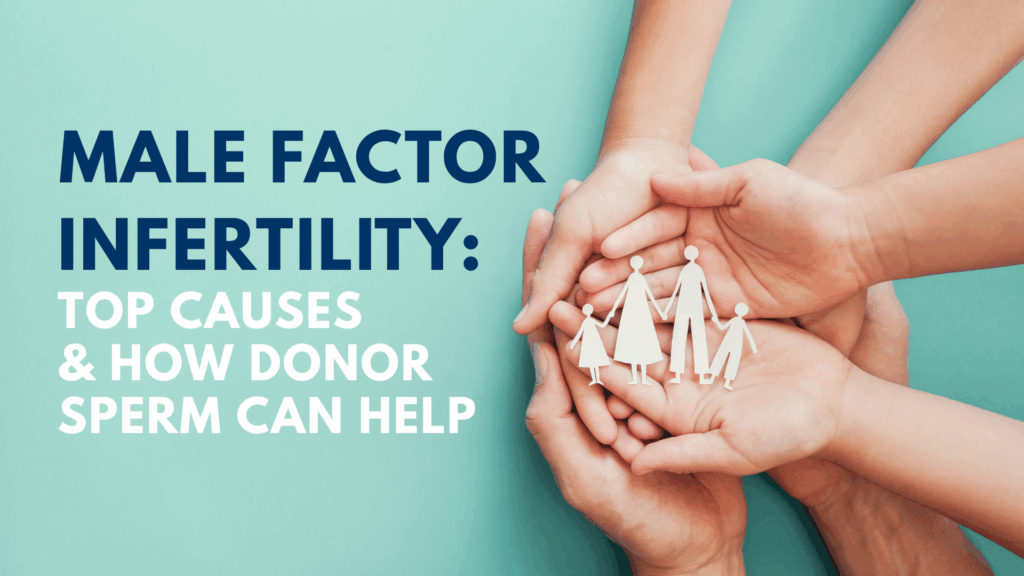Vitamin D and Fertility
Creating a Family shares One Easy Thing to Do Right Now to Up Your Chance of Getting Pregnant:
My grandmother was a big believer in the power of fresh air to cure an assortment of ills—perceived or real. If I was under the weather, unless running a fever, she sent me outside. If I was blue, she sent me outside. And certainly if I was crabby she sent me outside (although that was more likely because she didn’t want to put up with my mood). Turns out my grandma was on to something. Getting outside in the sun is good for your general health and can even improve your chances of getting pregnant.
Research has shown that low levels of Vitamin D can cause a host of illnesses and conditions, including infertility. Vitamin D is crucial when trying to get pregnant.
Vitamin D is actually a hormone that your body makes, starting when your skin is exposed to the sun’s ultraviolet rays. It is crucial for good health in general and for getting pregnant, with or without infertility treatment.
A Little Vitamin D Science
According to the University of Berkley Wellness newsletter, the vitamin D we consume exists in two forms:
Vitamin D3 (cholecalciferol) is the form the skin produces in response to sunlight and is also in certain foods derived from animals. The D3 used for food fortification and in most supplements is made from lanolin (sheep’s wool).
Vitamin D2 (ergocalciferol) comes from non-animal sources (fungi and plants) exposed to ultraviolet light to convert cholesterol-like substances into vitamin D. Most studies have found that vitamin D2 is much less potent than D3 in raising blood levels of vitamin D.
Whether you get vitamin D from sun exposure or from food or supplements, doctors believe that the effects in your body are the same.
How to Get Vitamin D to Increase Your Chances of Getting Pregnant
One of the best ways to increase your levels of Vitamin D is to expose your skin to sunlight. For some people, getting 10 to 20 minutes of midday sun on their arms and legs two or three times a week for much of the year will result in adequate blood levels of vitamin D; others will need longer sun exposure. Since vitamin D is fat-soluble, your body can store it for when you don’t get any sun, but how much you need stored for peak health and fertility is unknown. You also have to balance increasing Vitamin D levels with the very real risk of skin cancer from too much sun exposure.
We don’t really know the exact amount of time that you need to expose your skin to the sun for optimum Vitamin D levels because so many factors affect how much Vitamin D can be produced from sun exposure. According to UC Berkley Wellness newsletter, the following factors can make a difference.
- Skin pigmentation. Darker skin reduces penetration of ultraviolet rays from sunlight, and thus it takes more exposure for vitamin D production.
- Sunscreen. Sunscreens filter out or block ultraviolet rays and prevent the production of vitamin D. A sunscreen with a sun protection factor (SPF) of 15 reduces the production of vitamin D by 99%.
- Northern latitudes. The farther north you live, the longer the winter and the greater the reduction in vitamin D production. People who live in the northern third of the continental U.S. and in Canada synthesize little or no vitamin D from sun exposure from November through March. Those living in the southern third, however, can produce the vitamin pretty much year-round.
- Season. In most parts of the U.S., blood levels of vitamin D drop markedly in the winter, when days are shorter, the sun is weaker, and we spend less time outside and wear more clothes.
- Weather. Not to overstate the obvious, but cloudy rainy weather reduces your options for getting sun exposure.
Other factors that can limit creation of Vitamin D, include:
- Obesity. Obesity is linked with lower blood levels of D because some of this fat-soluble vitamin is trapped in fat tissue and because of other changes in vitamin D metabolism.
- Medications. Certain drugs—notably anticonvulsants, corticosteroids, and some HIV medications—reduce vitamin D levels.
- Disorders that impair fat absorption or liver or kidney function. Vitamin D needs fat to be absorbed in the intestines, so disorders that affect fat absorption (such as Crohn’s or celiac disease and cystic fibrosis) can reduce vitamin D levels. Some types of gastrointestinal surgery (such as gastric bypass for obesity) can also lead to D deficiency.
- Genetics. Various genetic factors influence the body’s ability to produce and utilize vitamin D.
What Should I Eat to Get More Vitamin D When Trying to Get Conceive
Unfortunately, it is hard to get Vitamin D through our foods. A few foods provide small amounts of Vitamin D, including oily fish such as salmon, mackerel, herring and sardines, as well as red meat and eggs. A number of foods, including some dairy products and breakfast cereal, are fortified with Vitamin D. I suspect this number will grow since Vitamin D has taken on the status of the new fad vitamin.
Many people are now taking Vitamin D (preferably vitamin D3) supplements. Talk with your doctor about whether this is the best option for you and what supplement she recommends.
Vitamin D When Trying to Get Pregnant
The first step is to have your doctor check the Vitamin D levels in your blood. Blood levels of vitamin D are measured in nanograms per milliliter (ng/mL). There is not universal agreement on the best level or what should be considered a Vitamin D deficiency, but Dr. Andy Toledo, a reproductive endocrinologist with RBA in Atlanta, told us that women trying to conceive should aim for 30+ ng/mL. You should check with your doctor about whether you need to get more sunlight or take Vitamin D supplements.
Keep in mind that if you’ve been trying for 12 months (if you’re under 35) or 6 months (35+) and haven’t become pregnant, you need to see an infertility specialist. No food or vitamin or amount of sunlight alone or in combination can cure the disease of infertility. Creating a Family has resources to help you find the right infertility clinic for you. Creating a Family Choosing a Fertility Clinic or Doctor: A Multimedia Guide For Those Considering Infertility Treatment.
Source: Creating a Family Radio Show with Dr. Andy Toledo on How to Get Pregnant When It’s Not Happening Fast
Creating a Family is the national adoption & infertility education organization. Their mission is to provide support and unbiased information before, during and after adoption or fertility treatment to help create strong families.







